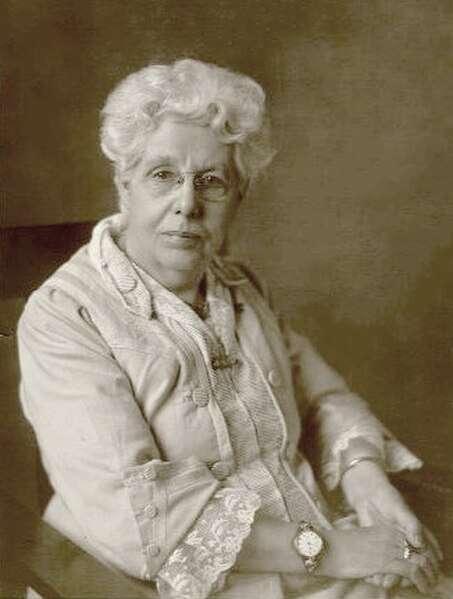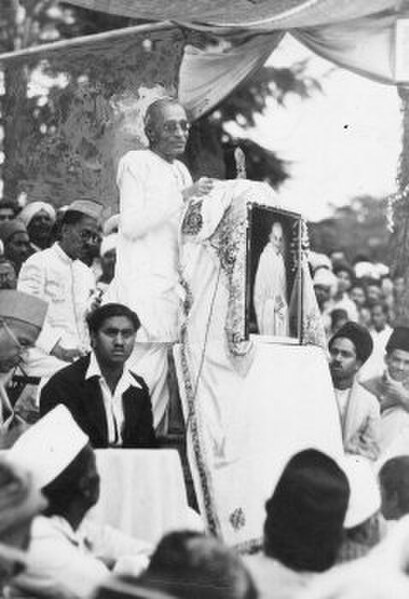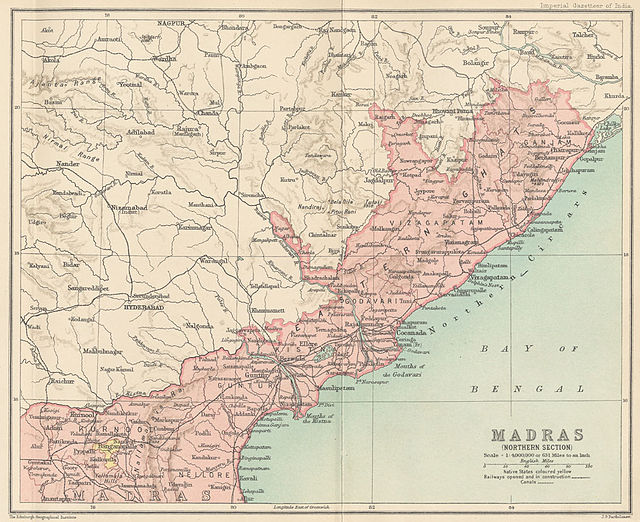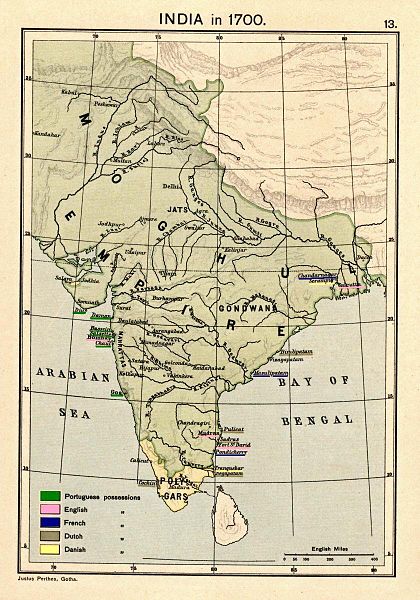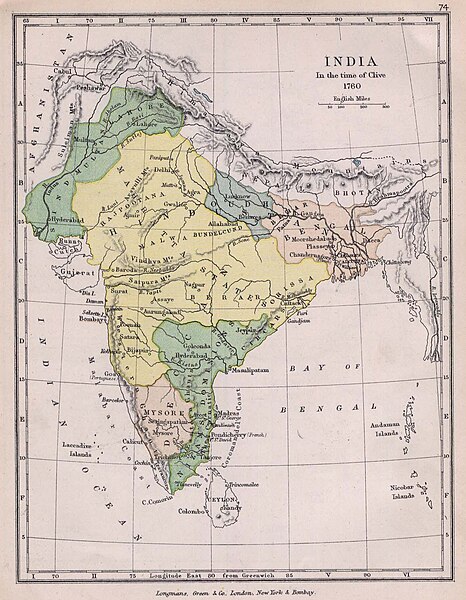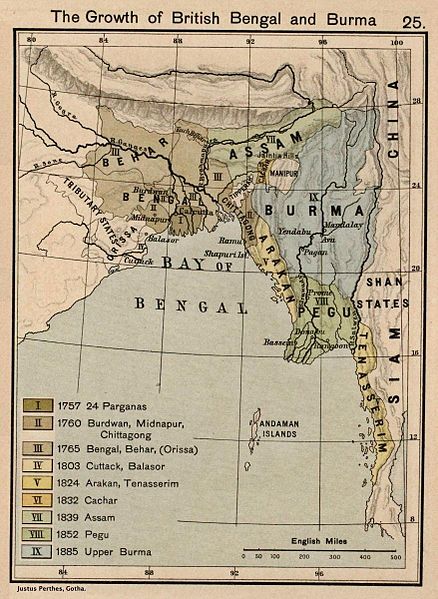The Madras Presidency or Madras Province, officially called the Presidency of Fort St. George until 1937, was an administrative subdivision (province) of British India and later the Dominion of India. At its greatest extent, the presidency included most of southern India, including all of present-day Andhra Pradesh, almost all of Tamil Nadu and parts of Kerala, Karnataka, Odisha and Telangana in the modern day. The city of Madras was the winter capital of the presidency and Ooty was the summer capital.
Annie Besant in 1922
The Indian National Congress came to power for the first time in 1937 with Chakravarti Rajagopalachari (pictured at a rally) as its Chief Minister
Madras province (North), 1909
Madras province (South), 1909
Presidencies and provinces of British India
The provinces of India, earlier presidencies of British India and still earlier, presidency towns, were the administrative divisions of British governance on the Indian subcontinent. Collectively, they have been called British India. In one form or another, they existed between 1612 and 1947, conventionally divided into three historical periods:Between 1612 and 1757 the East India Company (EIC) set up "factories" in several locations, mostly in coastal India, with the consent of the Mughal emperors, Maratha Empire or local rulers. Its rivals were the merchant trading companies of Portugal, Denmark, the Netherlands, and France. By the mid-18th century three Presidency towns: Madras, Bombay and Calcutta, had grown in size.
During the period of Company rule in India, 1757–1858, the Company gradually acquired sovereignty over large parts of India, now called "Presidencies". However, it also increasingly came under British government oversight, in effect sharing sovereignty with the Crown. At the same time, it gradually lost its mercantile privileges.
Following the Indian Rebellion of 1857 the company's remaining powers were transferred to the Crown. Under the British Raj (1858–1947), administrative boundaries were extended to include a few other British-administered regions, such as Upper Burma. Increasingly, however, the unwieldy presidencies were broken up into "Provinces". The EIC presidency armies were restructured into the British Indian Army.
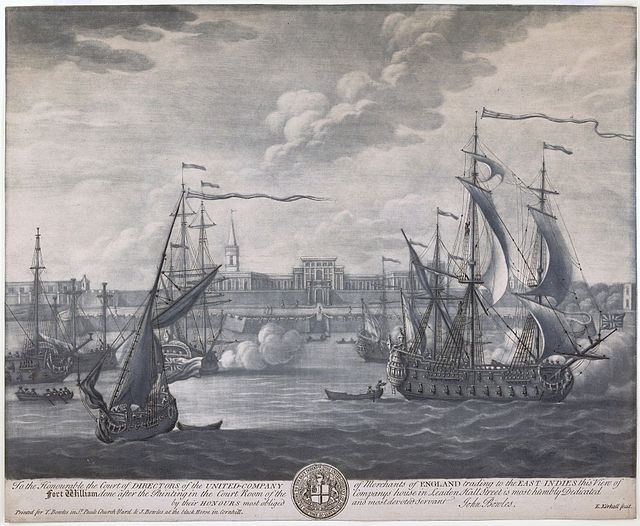
A mezzotint engraving of Fort William, Calcutta, the capital of the Bengal Presidency in British India 1735.
The Indian peninsula in 1700, showing the Mughal Empire and the European trading settlements.
The Indian peninsula in 1760, three years after the Battle of Plassey, showing the Maratha Empire and other prominent political states.
Expansion of British Bengal and Burma.

